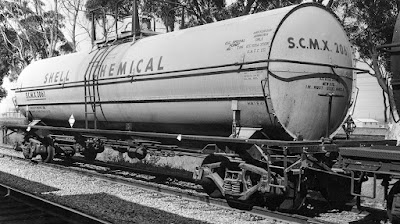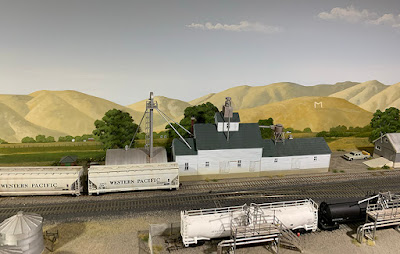In the preceding post, I showed my collecting together of the main parts for one of Athearn’s insulated tank cars, that they call a “chemical” tank car — a term with no specific meaning as to tank car type. I also showed my early modifications, primarily replacing the huge valve bonnet of the original. And I mentioned the car I wished to represent, owned by Shell Chemical Co. That post is here: https://modelingthesp.blogspot.com/2024/07/reworking-athearn-blue-box-tank-car.html .
Having stated the goal, I show below a photo of the prototype car. This photo, taken October 26, 1952, at Pittsburg, California by Chet McCoid (Bob’s Photo collection, courtesy Ted Culotta) was the basis for the recent decal set, D-245, available from National Scale Car (see their listing at: https://nationalscalecar.com/decals-ho-scale/ ).
Several interesting details are visible in this photo. One is that the gray color of the upper tank extends to the bottom sheet, though many tank cars like this had black bottom sheets. The underframe, though, is black. And note the tank hold-down band, which emerges from the tank jacket right below the junction of the top and bottom halves of the jacket, and is connected directly to the bolster via a turnbuckle. Here’s a closer view:
The Athearn bottom sheet, as noted in the previous post (link in top paragraph, above) was obviously designed for the three-compartment uninsulated Athearn model. To represent the double tank bands of the prototype single-compartment car, Athearn molded a pair of “fins” on each side of the bottom sheet, doubtless a more practical choice than a pair of slender bands.
These fins were removed and the area sanded flat. What they would be replaced by is a representation of what you see in the prototype close-up above, a turnbuckle connection to the bolster. I have some nice Tichy turnbuckles in my parts drawer, part no. 8021, which should do fine. With fins removed and roughly sanded, here is the bottom sheet. Sanding will be refined before painting.
I will continue to additional details for the car, and paint and lettering, in a future post.
Tony Thompson












































